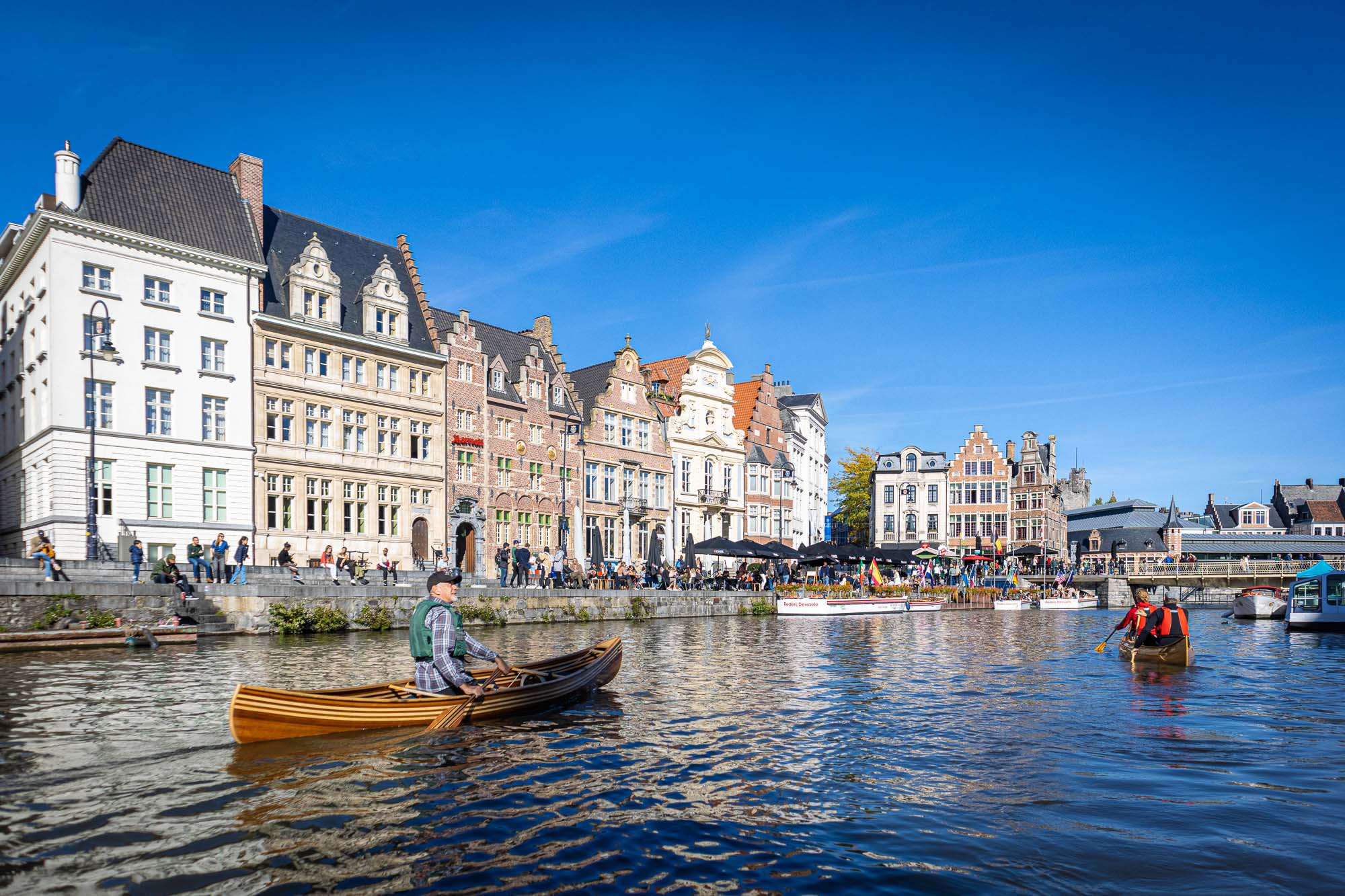A Comprehensive Guide for Beginners
Are you ready to embark on an adventure that will take you to serene lakes, meandering rivers, and exciting rapids? Canoeing offers a unique blend of tranquility and thrill, making it a favorite outdoor activity for many. Whether you’re a novice eager to dip your paddle into the water for the first time or an experienced paddler looking to refine your skills, this beginner’s guide to canoeing will equip you with the knowledge and techniques you need to navigate the waters with confidence.
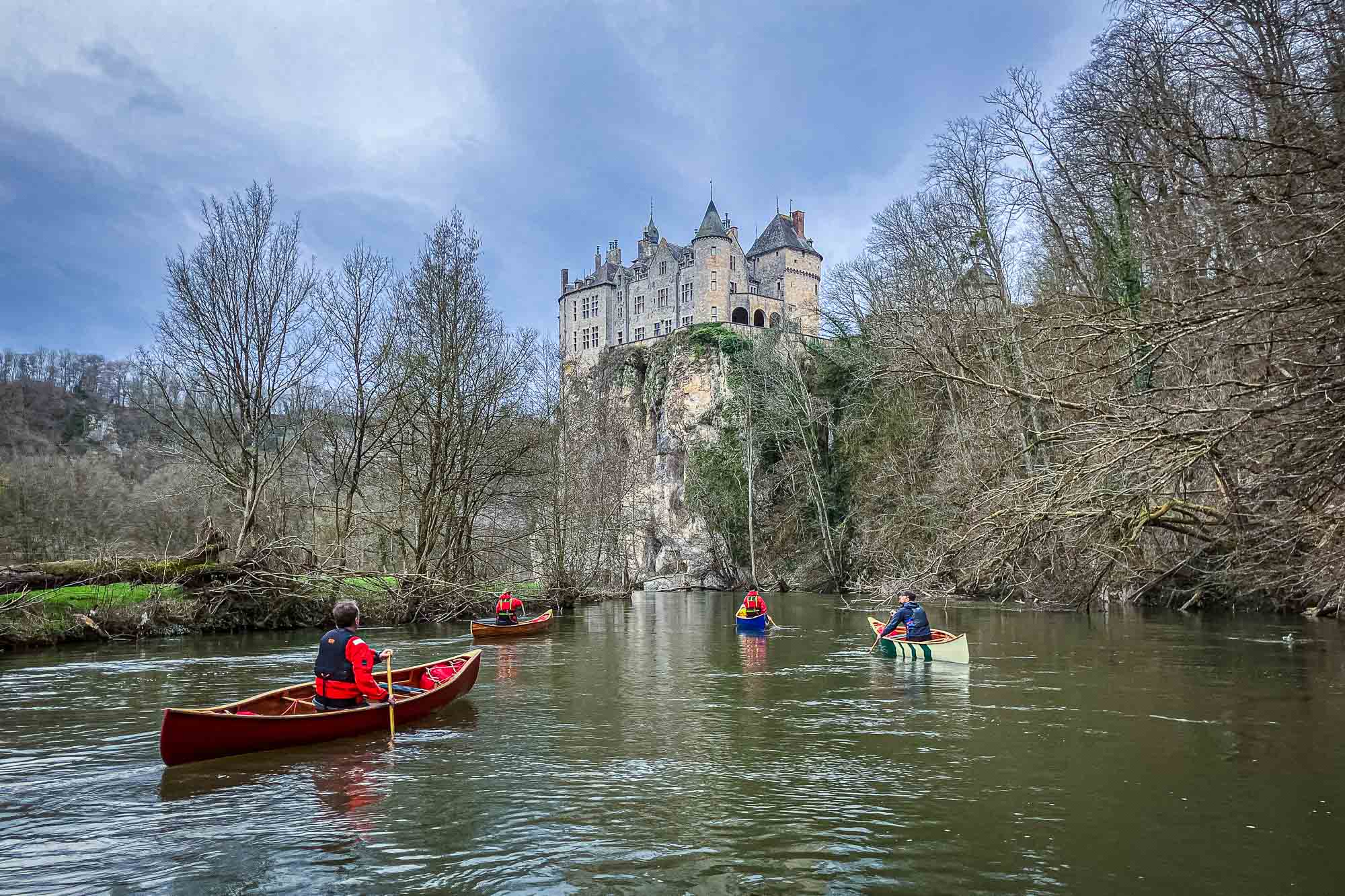
The Importance of Proper Skills and Training
As a seasoned canoe instructor, I’ve witnessed firsthand the transformative impact of proper training on aspiring paddlers. Each spring, I encounter individuals who have had negative or harrowing experiences on lakes, particularly in regions like Sweden, where unpredictable winds and currents can pose significant challenges. Investing in a comprehensive canoeing course not only enhances safety but also enriches the overall paddling experience.
- Safety First: Canoeing courses prioritize safety, equipping participants with essential skills to navigate various water conditions effectively. From understanding weather patterns to practicing emergency procedures, proper training instills confidence and prepares paddlers to handle unexpected challenges.
- Enhanced Experience: Beyond safety, enrolling in a canoeing course enhances the overall paddling experience. Learning from experienced instructors fosters a deeper understanding of paddling techniques, environmental awareness, and navigation strategies, enriching every moment spent on the water.
- Community and Support: Joining a canoeing course provides access to a supportive community of fellow paddlers. Sharing experiences, learning from each other’s triumphs and challenges, and building camaraderie contribute to a fulfilling and rewarding paddling journey.
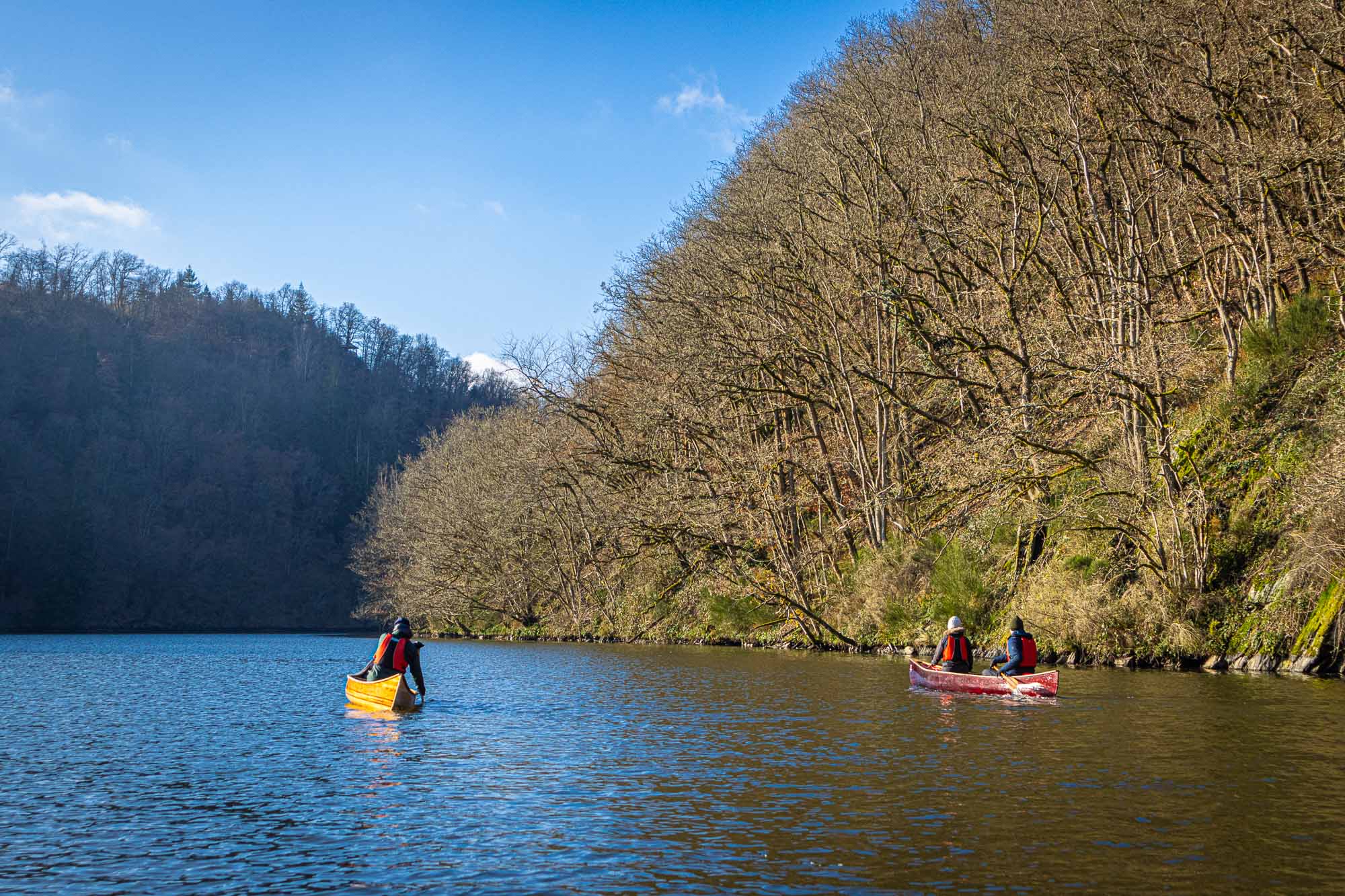
Getting Started: Launching Your Canoe
Before diving headfirst into the canoeing experience, it’s crucial to establish a few basics, such as identifying the bow (front) and stern (back) of the boat, as well as determining seating arrangements. This initial understanding sets the stage for a smoother and more enjoyable paddling journey.
To identify the bow of the canoe, one can simply examine the seats. The end with a larger space between the boat’s end and the seat indicates the bow. Attempting to sit in the rear seat as the front seat quickly reveals the issue, as there won’t be sufficient legroom.
Steering in a canoe is a joint effort, but keeping course originates in the stern making it advisable to seat the more experienced paddler in that position. Ideally, the heavier paddler should occupy the rear seat.
For solo paddlers, positioning oneself closer to the middle of the canoe is preferable. This helps distribute weight more evenly, preventing the bow from being lifted by strong winds. In symmetrical canoes, where the bow and stern share the same shape, paddlers can sit backward on the bow seat and paddle in reverse to shift their weight forward. Alternatively, adjusting seat placement closer to the yoke, located at the canoe’s center, may be necessary depending on prevailing conditions and the canoe’s design.
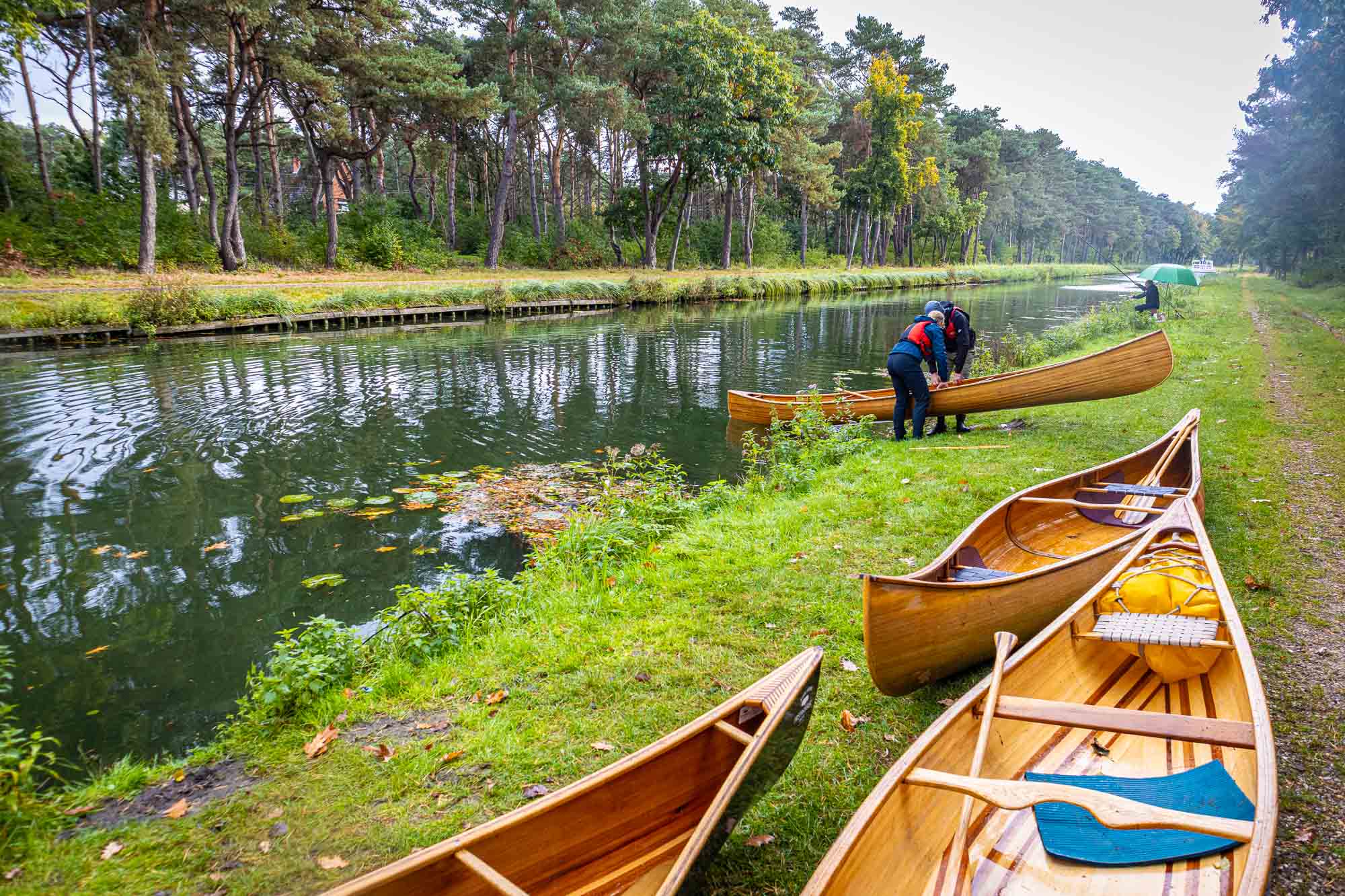
Entering and Exiting the Canoe
Canoes offer remarkable stability once you’re settled inside them. However, the challenge for many lies in the process of getting in, particularly due to the high center of gravity while stepping into the canoe. The key to enhancing stability is lowering your center of gravity closer to the bottom of the canoe.
When launching from a beach, it’s advisable to position the canoe perpendicular to the shore. With the bow of the canoe immersed in the water, one person can stabilize it from the stern while it rests on the shore. Meanwhile, the bow paddler can carefully step into the canoe, making use of the gunwales for support. Keeping low and ensuring feet are close to the center line of the boat, the bow paddler settles into the bow seat. Once seated, the stern paddler can gently push the boat into the water until it floats, then carefully step into the canoe and onto the stern seat.
On a dock or rocky shoreline, positioning the canoe parallel to the dock or shore is ideal. The stern paddler stabilizes the boat while the other steps in, maintaining a low stance to enhance stability. Stepping into the center of the canoe one foot at a time ensures balance and control. For solo paddlers, the process remains similar, albeit without a stabilizing partner. Reach towards the far gunwale to equalize weight distribution before stepping in, entering near the narrower stern of the boat, and gradually moving forward.
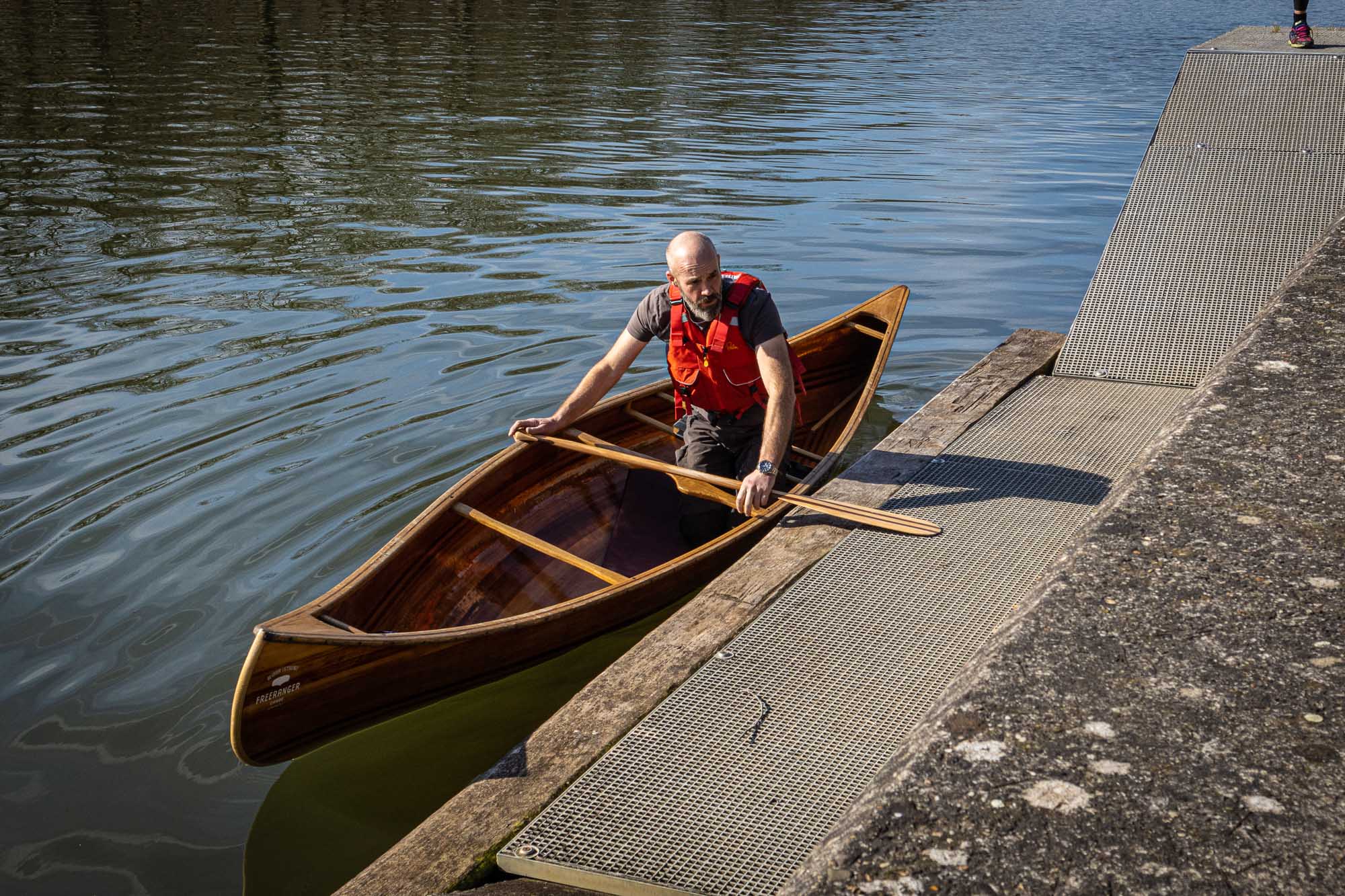
Paddling Techniques
From forward strokes to steering maneuvers, mastering paddling techniques is essential for efficient and enjoyable canoeing. Proper grip, paddle placement, and torso rotation optimize propulsion and control, allowing paddlers to navigate with confidence in various water conditions.
Learning how to paddle a canoe effectively involves mastering various techniques for propulsion and steering. Here’s a breakdown of the key skills you’ll need:
How to Hold a Canoe Paddle:
- Grip the top of the paddle with one hand (the butt end) and hold the shaft at shoulder width with the other hand.
- Maintain a slight bend in your elbows for flexibility and control.
How to Paddle Forward:
- Position your hands correctly on the paddle.
- Rotate your torso in the direction of your top hand.
- Plant the paddle blade in the water and push forward and down with your top hand while guiding the blade back with your lower hand.
- Keep the paddle vertical in the water and use your core muscles for power.
- Sync your strokes with your paddling partner for maximum efficiency.
How to Paddle Backward:
- Paddling backward follows the same principles as paddling forward but in reverse.
- Practice this skill for maneuverability and versatility in various paddling situations.
How to Steer a Canoe:
- The stern paddler primarily keeps the canoe on course.
- Instead of solely switching sides for steering, learn the J-stroke.
- The J-stroke involves initiating a forward paddle stroke and then turning the power-face of the blade away from the canoe to correct direction.
- To change direction, use a sweep stroke to turn the canoe away from the paddling side. Alternatively make a draw stroke to turn the other side.
- Communication between paddlers and coordinated strokes are essential for effective steering.
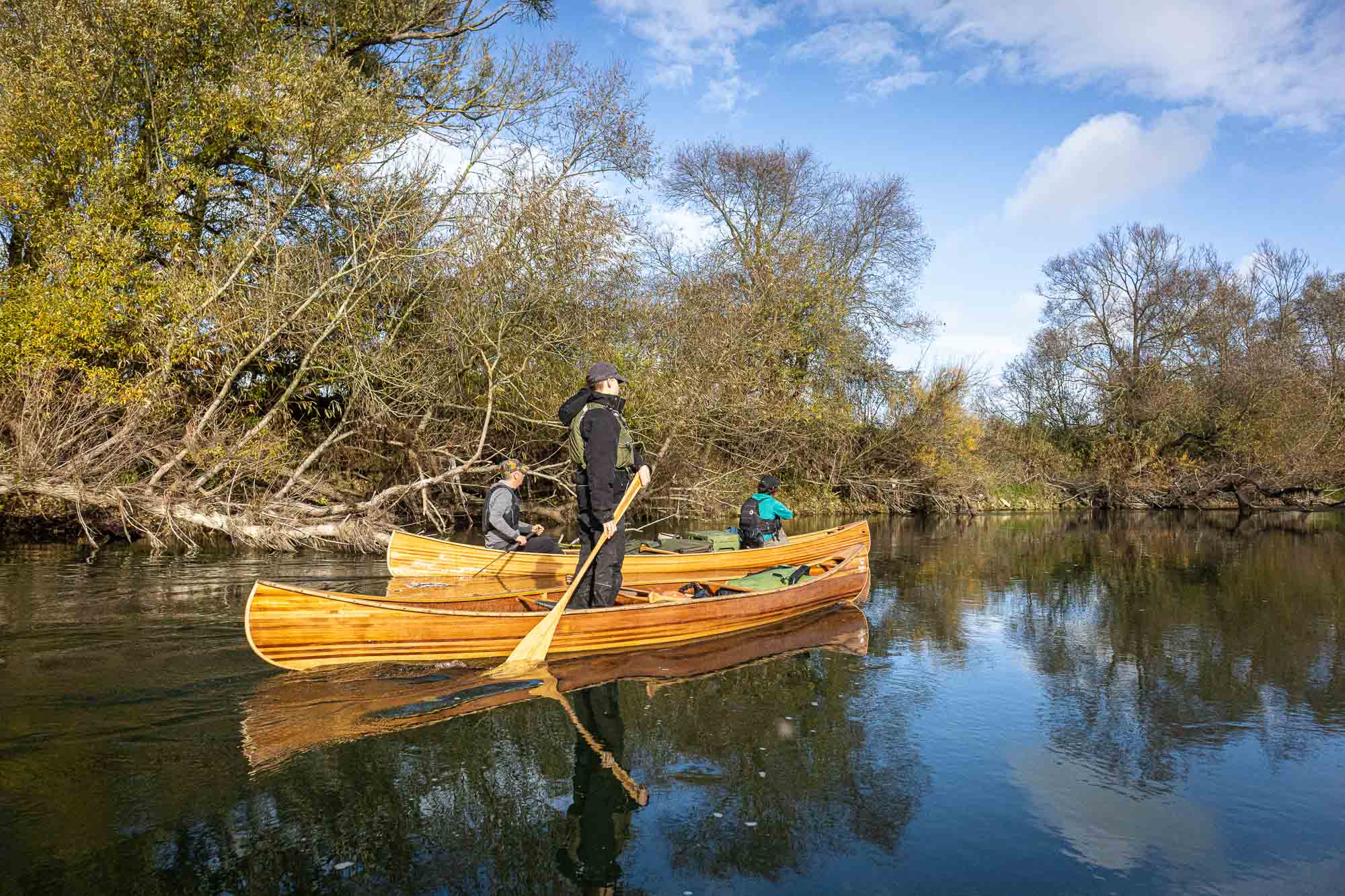
Mastering these techniques not only enhances your paddling efficiency but also ensures a safer and more enjoyable canoeing experience. Practice these skills regularly to build confidence and proficiency on the water.
As you progress in your paddling journey and become more proficient, you’ll discover a wide range of paddling strokes that can enhance your maneuverability and control on the water. Among these are advanced techniques like the C-stroke and the low brace, which offer additional versatility and finesse in your paddling repertoire.
The diagonal stroke, for example, is a nuanced maneuver that allows for smooth turns and corrections while maintaining forward momentum. It involves tracing a subtle diagonal line with your paddle blade in the water, utilizing both forward and corrective elements to adjust your canoe’s course with precision.
On the other hand, the low brace is a defensive stroke used to stabilize your canoe and prevent capsizing in rough or turbulent conditions. By positioning your paddle horizontally close to the water’s surface and applying downward pressure, you create a supportive brace that counteracts the forces acting on your canoe, helping you maintain balance and control.
Exploring these and other advanced canoe strokes opens up a world of possibilities for your paddling adventures. Whether navigating winding rivers, navigating through challenging currents, or simply honing your skills for recreational paddling, mastering these techniques adds depth and versatility to your paddling toolkit.
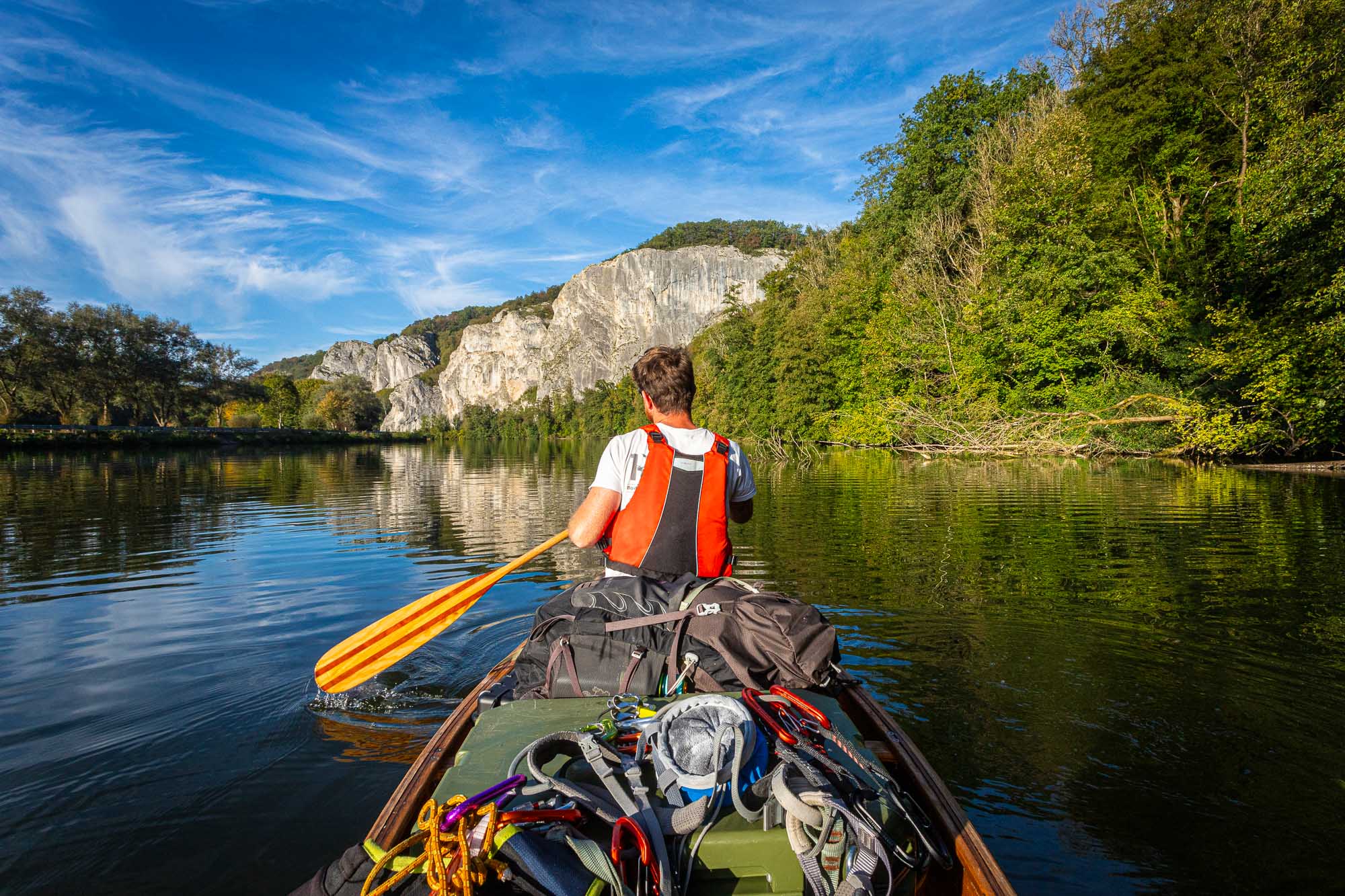
Canoeing in Different Conditions
Canoeing on different bodies of water and in varying conditions offers unique experiences and challenges, each requiring specific knowledge and skills to navigate safely and enjoyably.
Canoeing on a River:
Exploring a river by canoe is a thrilling adventure, but it requires careful planning and awareness of potential hazards. Always be mindful of what lies downstream, including obstacles like log jams or waterfalls. Communication between the bow and stern paddlers is crucial for steering clear of rocks, downed trees, and other obstacles. In slower, meandering rivers, consider the logistics of returning to your starting point, either by paddling upstream or arranging for shuttle transportation.
Canoeing Rapids:
Navigating rapids demands even greater skill and caution. Before tackling any river with rapids, familiarize yourself with the features of the route and consider enlisting the guidance of experienced paddlers or taking a moving water course. Essential tips include wearing a PFD, assuming a kneeling position for stability, and identifying clear paths through the rapids marked by V-shaped patterns in the water. Avoid grabbing the gunwales and maintain control by keeping both hands on the paddle. If caught against a rock, lean into it to prevent capsizing and assess whether you can maneuver off the obstacle safely.
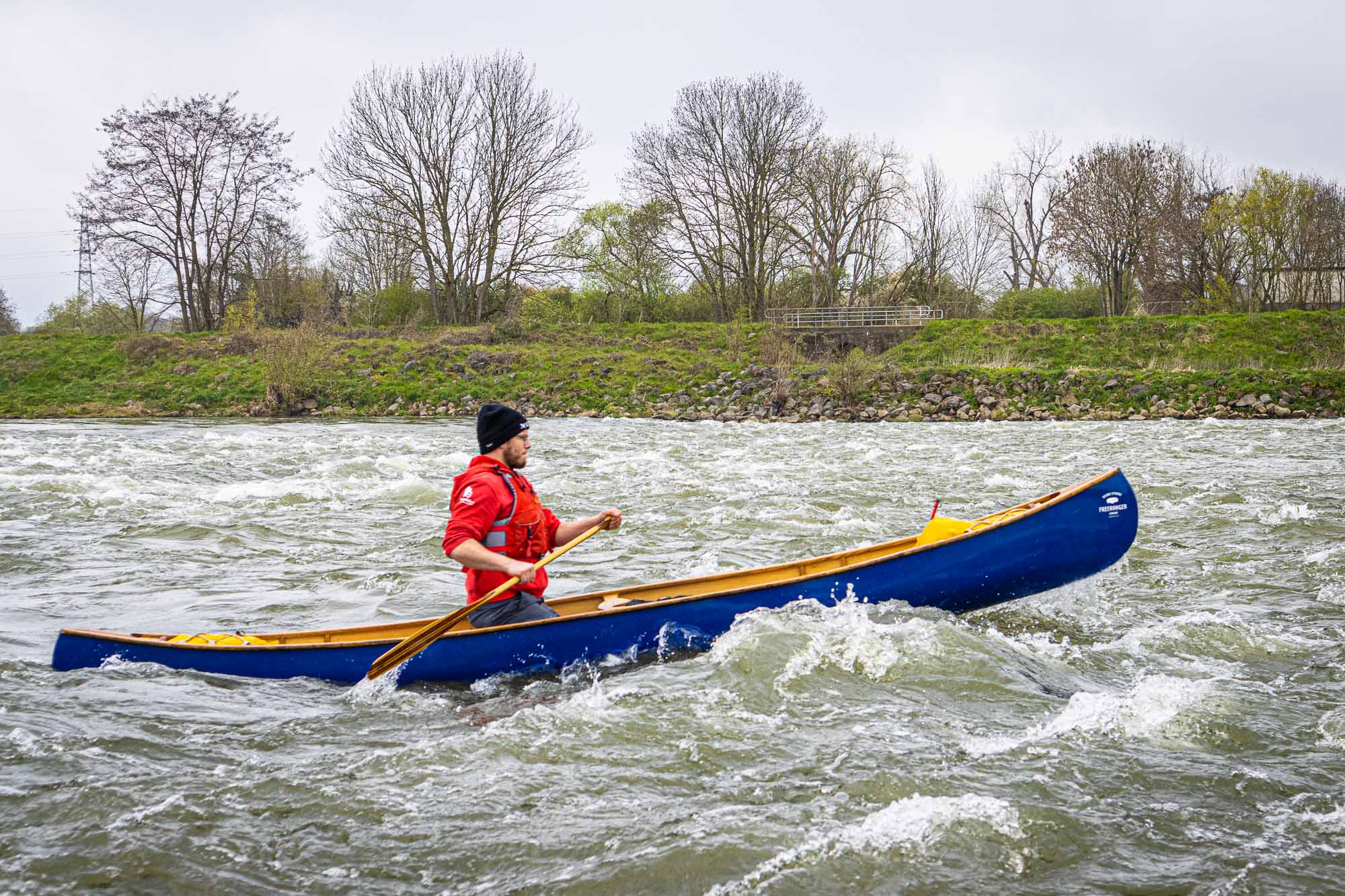
Canoeing on a Lake:
Canoeing on a serene lake offers a peaceful experience ideal for honing your paddling skills. While lakes may seem tranquil, remain vigilant for hazards such as rocks and submerged obstacles. Also wind is a force to be reckoned with. Check weather conditions before setting out and always wear a PFD for safety.
Canoeing Upstream:
Although paddling upstream may not be as enjoyable as downstream travel, it’s sometimes necessary. Focus on paddling directly into the current to prevent drifting sideways. The stern paddler should maintain careful control of the boat’s direction, while the bow paddler provides power to propel the canoe forward.
By understanding the nuances of canoeing on different bodies of water and in diverse conditions, you can enhance your safety, enjoyment, and mastery of this timeless watercraft activity. Always prioritize safety, practice proper techniques, and continue learning to fully appreciate the freedom and adventure that canoeing offers.

Handling Emergencies
While canoeing is generally safe, knowing how to respond to emergencies is paramount. Capsizing, though rare, can occur unexpectedly. Canoeing courses teach essential skills such as self-rescue techniques, righting a capsized canoe, and administering first aid, empowering paddlers to stay calm and respond effectively in challenging situations.
What to Do if Your Canoe Capsizes:
Surprisingly, tipping a canoe on flatwater is quite difficult once you’re properly positioned with a low center of gravity. Avoid grabbing the gunwales, which raises your center of gravity, and experiment with gently shifting your weight side to side to understand the canoe’s stability. With proper technique, you can tilt a canoe significantly without capsizing it.
Causes of Canoe Capsizing:
Canoe capsizing typically results from paddler errors, such as standing up, grabbing the gunwales, or encountering fast-flowing water while the canoe is turned sideways. Attempting to exit the canoe abruptly can also lead to tipping. If capsizing occurs frequently on calm water, it indicates a serious issue requiring immediate instruction.
How to Right a Canoe:
If the canoe capsizes, there are several methods to correct it. Ensure the canoe is upside down if it’s free of gear. Strong swimmers can swim under the canoe, facing each other, and grab the gunwales near the yoke. Together, tip the canoe slightly to break the seal, then lift it into the air with a strong kick, flipping it upright. Afterward, bail out any remaining water from the canoe.
Getting Into a Canoe From the Water:
Getting back into the canoe from the water requires practice and coordination. With a partner in the water, each person should grab opposite sides of the canoe near the middle. By counteracting each other’s movements, both individuals pull themselves up and over the gunwales into the canoe. Practice this maneuver to ensure proficiency in case of a capsizing incident.
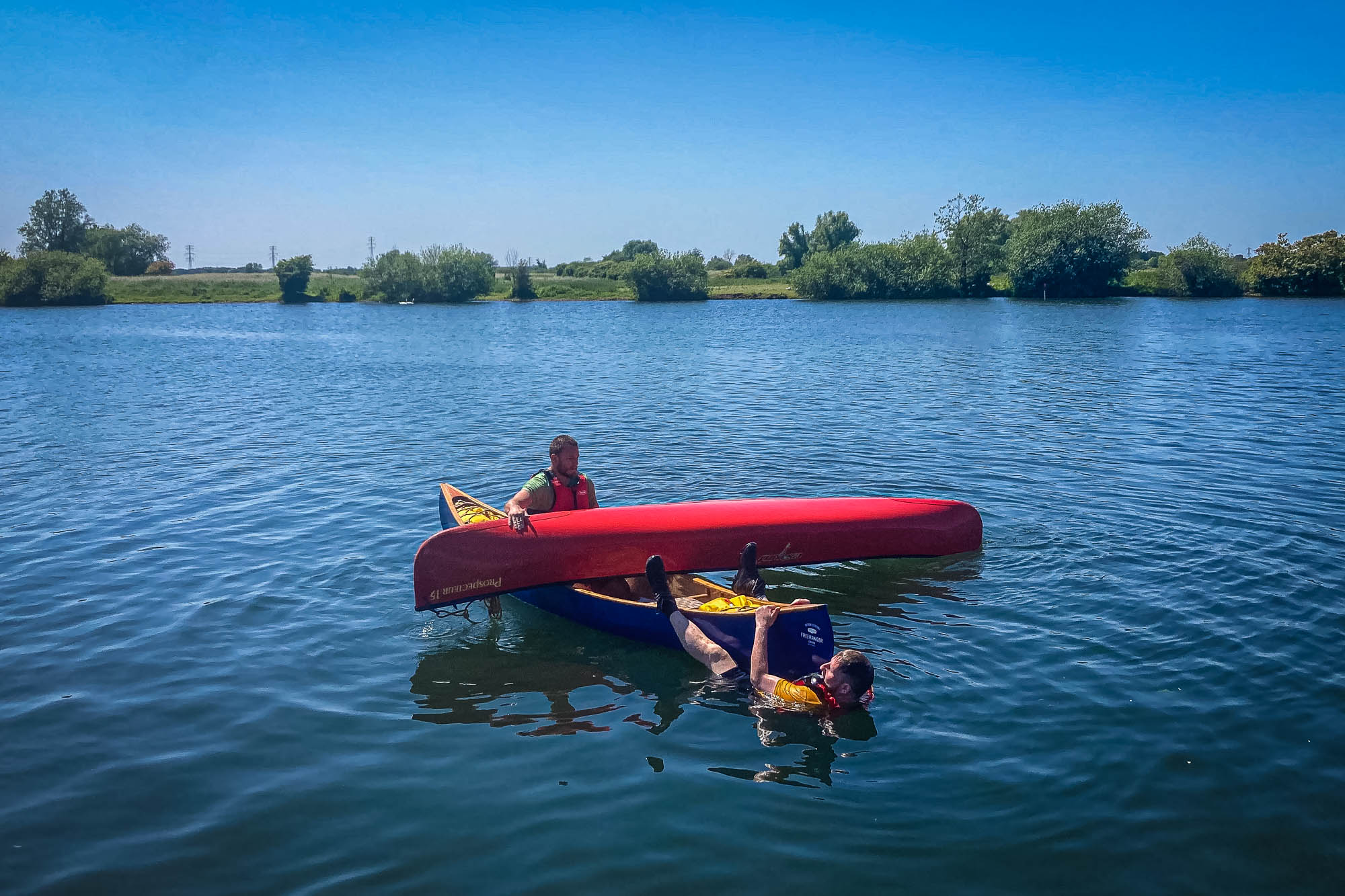
Conclusion
Embarking on a canoeing adventure transcends mere recreation; it symbolizes a profound journey of self-discovery, exploration, and communion with nature’s wonders. It’s an opportunity to navigate through serene waters, explore hidden coves, and immerse oneself in the tranquility of untouched landscapes. However, to fully embrace the transformative potential of canoeing, it’s crucial to equip oneself with the necessary skills and knowledge.
Enrolling in canoeing courses offers more than just practical training; it instills confidence, ensures safety, and fosters a deeper understanding of the natural environment. Through expert guidance and hands-on experience, paddlers learn to navigate diverse water conditions, master essential paddling techniques, and develop a keen awareness of potential hazards. Moreover, these courses cultivate a profound respect for nature and promote responsible stewardship of our precious waterways.
So, seize your paddle and embark on a journey of discovery by enrolling in a canoeing course. Let the rhythmic motion of your strokes propel you forward, as you explore new horizons and forge a profound connection with the world around you. Each paddle stroke becomes a symphony of freedom and joy, echoing across the tranquil waters and echoing the timeless beauty of canoeing.
In conclusion, with the right skills and training, every moment spent on the water becomes an unforgettable odyssey—a testament to the boundless possibilities and sheer exhilaration of canoeing. So, embrace the adventure, embrace the journey, and let the waters guide you toward endless possibilities. Happy paddling!
